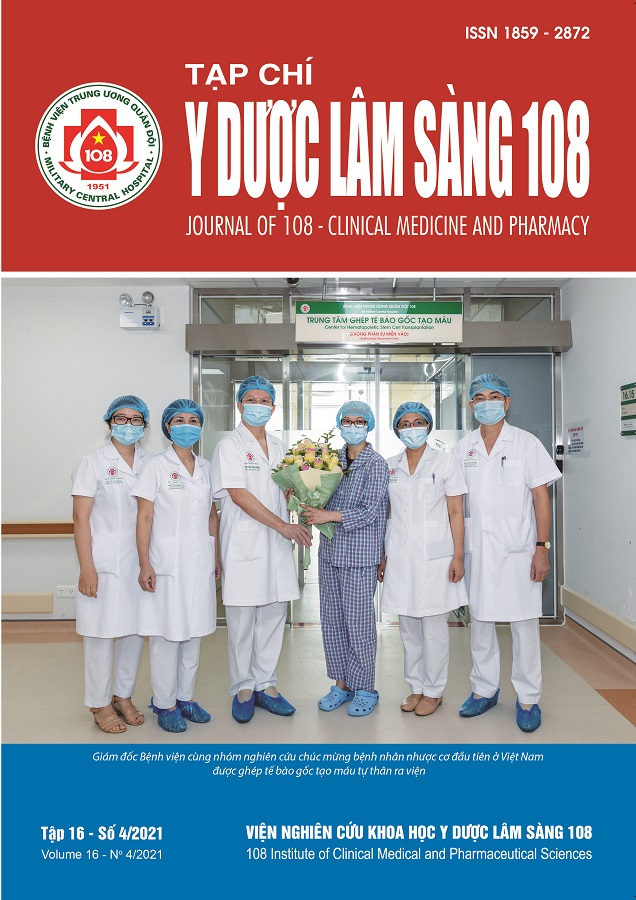The role of MDCT portography for the selection and planning of transjugular intrahepatic portosystemic shunt procedure in cirrhotic patients
Main Article Content
Keywords
Abstract
Objective: To decide the role of MDCT portography for the selection and planning of transjugular intrahepatic portosystemic shunt (TIPS) procedure in cirrhotic patients. Subject and method: 71 cirrhotic patients who met the TIPS procedural criteria for the treatment of bleeding and prevention of rebleeding due to rupture of gastroesophageal varices. They were screened by MDCT at 108 Military Central Hospital and Phu Tho Provincial General Hospital from October, 2013 to July, 2020. Result: The rate of patients underwent TIPS was 70.4% and 29.6% was not. The majority of patients with non-TIPS procedure was due to the changes of morphology of the liver and portal vein with the rate was 38.1%. The shunt planning from right hepatic vein to right branch of portal vein was 92% of patients, where as this shunt direction was performed for 70% of patients. The mean number of portal vein puntures was 2.0 ± 0.9. Subcapsular hematoma was the major complication with the rate of 22.9%. Conclusion: MDCT portography had the reliable role for the selection and the planning of TIPS procedure in cirrhotic patients.
Article Details
References
2. Chen YI, Ghali P (2012) Prevention and management of gastroesophageal varices in cirrhosis. Int J Hepatol 2012: 750150.
3. de Franchis R (2015) Expanding consensus in portal hypertension: Report of the Baveno VI Consensus Workshop: Stratifying risk and individualizing care for portal hypertension. J Hepatol 63(3): 743-752.
4. Lee EW et al (2014) Coil-assisted retrograde transvenous obliteration (carto) for the treatment of portal hypertensive variceal bleeding: Preliminary results. Clin Transl Gastroenterol 5: 61.
5. Loffroy R et al (2015) Transjugular intrahepatic portosystemic shunt for acute variceal gastrointestinal bleeding: Indications, techniques and outcomes. Diagn Interv Imaging 96(7-8): 745-755.
6. Meine TC et al (2020) Transjugular intrahepatic portosystemic shunt placement: Portal vein puncture guided by 3D/2D image registration of contrast-enhanced multi-detector computed tomography and fluoroscopy. Abdom Radiol (NY).
7. Punamiya SJ, Amarapurkar DN (2011) Role of TIPS in improving survival of patients with decompensated liver disease. Int J Hepatol: 398291.
8. Qin JP et al (2015) Contrast enhanced computed tomography and reconstruction of hepatic vascular system for transjugular intrahepatic portal systemic shunt puncture path planning. World J Gastroenterol 21(32): 9623-9629.
9. Rodrigues SG et al (2019) Systematic review with meta-analysis: portal vein recanalisation and transjugular intrahepatic portosystemic shunt for portal vein thrombosis. Aliment Pharmacol Ther 49(1): 20-30.
10. Senzolo M et al (2006) Transjugular intrahepatic portosystemic shunt for portal vein thrombosis with and without cavernous transformation. Aliment Pharmacol Ther 23(6): 767-775.
 ISSN: 1859 - 2872
ISSN: 1859 - 2872
